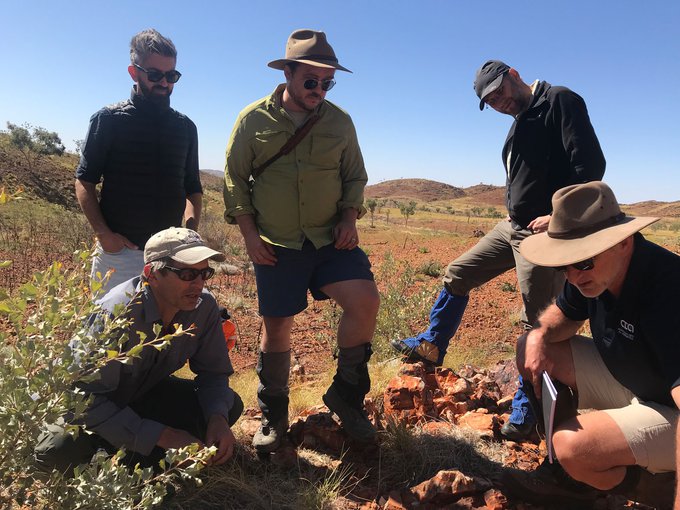
Aug. 28, 2019
Research Highlight
Scientists Explore Outback as Testbed for Mars

Scientists with NASA's Mars 2020 mission and the European-Russian ExoMars mission traveled to the Australian Outback to hone their research techniques before their missions launch to the Red Planet in the summer of 2020.Image credit: NASA/JPL-Caltech.
From the NASA Mars Exploration Program
Scientists from NASA’s upcoming Mars 2020 mission joined their counterparts from the joint European-Russian ExoMars mission in an expedition to the Australian Outback, one of the most remote, arid regions on the planet. Both teams came to hone their research techniques before their missions launch to the Red Planet next summer in search of signs of past life on Mars.
The researchers know that any proof of past life on Mars will more than likely be almost microscopic in size. That’s where the Pilbara region of North West Australia comes in.
“The Pilbara Outback is home to the oldest confirmed fossilized lifeforms on Earth, called stromatolites,” said Ken Farley, project scientist for Mars 2020 at NASA’s Jet Propulsion Laboratory in Pasadena, California. “If we can better understand how these fossils came to be here — and the nearby geological signposts that help point the way to them — we’ll be that much more prepared when hunting for signs of life on Mars.”
The field trip was led by Martin Van Kranendonk, a professor of geology and astrobiology at the University of New South Wales in Sydney.
“Just as the Apollo astronauts visited areas of geologic interest on Earth before they journeyed to the Moon, the scientists of Mars 2020 and ExoMars are doing their due diligence before their missions make the 100-million-plus-mile [160-million-plus-kilometer] trip to the Red Planet,” said Mitch Schulte, Mars 2020 program scientist at NASA Headquarters in Washington. “Martin helped them by providing a thorough and thought-provoking look into the geologic features of the Pilbara.”
Click here to read the full press release from NASA’s Mars Exploration Program.